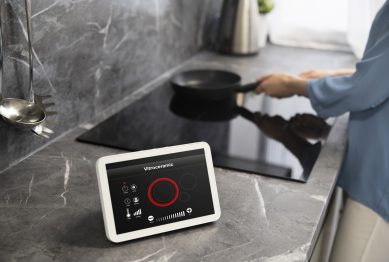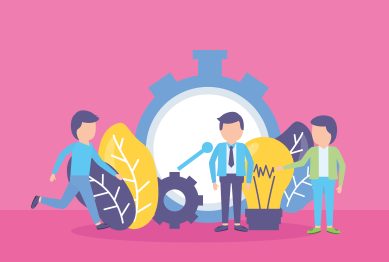In today’s digital world, it’s easy to assume that the process of organizing information, files, and tasks is a purely rational, mechanical task. After all, we have a wide array of digital tools at our disposal—apps like Evernote, Trello, Google Drive, and more—that promise to streamline our workflow, improve productivity, and keep us organized. However, as we dive deeper into how we manage our digital lives, it becomes clear that digital organization is far more than a purely logical exercise. It’s an emotional process that impacts our well-being, mental clarity, and even our sense of identity.
While we often think about digital tools as “neutral” and objective, the truth is that the way we organize, categorize, and interact with information is deeply tied to our emotions. Whether it’s the joy of cleaning up an inbox, the stress of cluttered files, or the satisfaction of completing a digital project, our emotions shape how we manage our digital worlds. In this article, we’ll explore why digital organization is still emotional, how it affects us, and why we should pay attention to the emotional side of managing our digital spaces.

The Emotional Impact of Digital Organization
It’s easy to assume that organizing digital files is simply about keeping everything in its place, but there’s much more going on behind the scenes. How we organize our digital spaces can affect our productivity, mental health, and overall mood. Here are a few ways digital organization impacts our emotions:
1. The Psychological Weight of Digital Clutter
Digital clutter, just like physical clutter, can lead to feelings of anxiety, stress, and overwhelm. When we’re bombarded with thousands of unread emails, files scattered across different folders, or overflowing to-do lists, it’s easy to feel mentally drained. The constant pressure of keeping up with a chaotic digital environment can trigger negative emotions such as frustration or helplessness.
Studies have shown that disorganization—both digital and physical—can lead to a decrease in cognitive function, particularly the ability to focus and make decisions. The emotional burden of digital clutter is not just about the time spent cleaning up—it also impacts our ability to think clearly and work effectively.
- Source: According to a 2021 study published in the Journal of Environmental Psychology, cluttered digital environments can reduce a person’s cognitive resources, leading to a sense of being mentally overwhelmed (Leppänen et al., 2021).
2. The Joy of Organization and Control
On the flip side, organizing and cleaning up digital spaces can bring a sense of relief, accomplishment, and control. For many people, the act of decluttering emails or organizing a messy desktop can lead to a boost in mood and self-esteem. It’s not just about the task itself—it’s the emotional satisfaction that comes with regaining control over our digital lives.
This feeling of control is vital for mental health. As we organize our digital spaces, we create a sense of order, which can help alleviate the stress caused by chaos. In fact, research suggests that people who maintain organized workspaces, both digital and physical, report higher levels of happiness and productivity.
- Source: A 2016 study published in the Personality and Social Psychology Bulletin found that individuals who maintained a more organized environment experienced less stress and greater well-being than those surrounded by clutter (Frost & Hartl, 2016).
3. The Emotional Connection to Digital Memories
In addition to managing work-related files, many people use digital spaces to store personal memories—photos, videos, and other sentimental items. The emotional weight of organizing these files can be significant. For example, sorting through years of photos might bring up feelings of nostalgia or loss, while deleting old memories might stir up guilt or regret.
How we handle these personal digital artifacts plays a role in shaping our emotional connection to the digital world. Some people may experience joy when they organize and reflect on these memories, while others may feel sadness or attachment to the past. The act of digital organization becomes a personal and emotional experience that extends beyond merely tidying up a virtual space.
- Source: Research from the University of California found that people tend to feel emotionally attached to their digital possessions (such as photos and social media posts), and these emotions can influence how they organize and interact with their digital environments (Niemeyer & Munsch, 2018).
The Role of Digital Tools in Shaping Emotional Responses
While it’s clear that digital organization is emotional, the tools we use to manage our digital spaces play a significant role in shaping our emotional responses. The design, functionality, and user experience of digital tools can either enhance or exacerbate the emotional impact of organizing our information.
1. The Impact of User-Friendly Tools
Tools that are intuitive and easy to use can make the process of organizing our digital lives feel more rewarding and less stressful. For instance, apps like Notion, Evernote, or Google Keep offer features that help users stay organized without feeling overwhelmed. The ability to create visual, customizable layouts or templates can bring a sense of joy and satisfaction, as it feels like we’re actively shaping our digital spaces.
The emotional appeal of these tools lies in their user-friendly nature. They simplify complex processes and make digital organization feel like a creative, engaging task. This contributes to positive emotions such as pride and accomplishment, making us more likely to continue using these tools in the long term.
2. The Stress of Overly Complex Tools
On the other hand, digital tools that are overly complex or difficult to navigate can lead to frustration and anxiety. When the technology doesn’t align with our organizational needs, it can add another layer of stress. For example, if a productivity tool is difficult to set up or requires constant updates and maintenance, it can feel like a never-ending burden rather than a helpful resource.
This is why simplicity and usability are key factors in choosing digital tools. Tools that streamline the process of organizing information—rather than complicating it—are more likely to lead to a positive emotional experience.
Strategies for Emotionally-Healthy Digital Organization
Given the strong emotional connection we have to our digital spaces, it’s essential to approach digital organization in a way that supports both mental clarity and well-being. Here are a few strategies to help create an emotionally healthy digital environment:
1. Establish Clear Digital Boundaries
Just like in our physical environments, it’s important to establish boundaries in our digital spaces. Set aside specific times to organize your digital files, emails, and to-do lists. This prevents digital clutter from accumulating over time and reduces the stress of last-minute cleanups.
- Tip: Use the “Inbox Zero” method for email management—set aside time each day or week to go through and respond to emails, ensuring that your inbox doesn’t get overwhelming.
2. Use Visual Tools to Enhance Organization
Incorporate tools that allow you to visually organize your information, such as color-coded folders, mind maps, or project boards. These visual cues can reduce cognitive load, making it easier to manage and find information when needed.
- Tip: Apps like Trello or Airtable can help you visualize your tasks and projects in an intuitive, organized way.
3. Practice Mindful Digital Detox
Sometimes the best way to regain control of your digital space is to step away from it. A digital detox allows you to clear your mind and regain perspective on what’s truly important in your digital life. Consider setting regular “no-tech” times throughout the week to give yourself a mental break.
- Tip: Try turning off notifications or using apps like Forest to encourage mindfulness and reduce screen time.
4. Regularly Review and Reflect
Finally, regularly review your digital spaces and reflect on whether they’re working for you. Is your email inbox overwhelming you? Are your files organized in a way that makes sense? Reflecting on your digital habits can help you stay on top of digital clutter and ensure that your digital environment is emotionally supportive.
- Tip: At the end of each week, spend 10-15 minutes organizing and reflecting on your digital spaces to ensure they align with your goals.
Conclusion
Digital organization is not just about tidying up files and emails—it’s about managing the emotional weight of digital spaces. By understanding how our emotions play a role in how we interact with our digital worlds, we can create environments that support both productivity and well-being. By embracing simplicity, setting boundaries, and using tools that align with our emotional needs, we can take control of our digital spaces in a way that enhances our mental clarity, reduces stress, and promotes overall happiness.
Reference
- Digital Hoarding and Its Emotional Toll – https://en.wikipedia.org
- Emotional Attachment to Digital Possessions – https://www.researchgate.net
- Digital Clutter Increases Cognitive Load & Stress – https://pmc.ncbi.nlm.nih.gov









